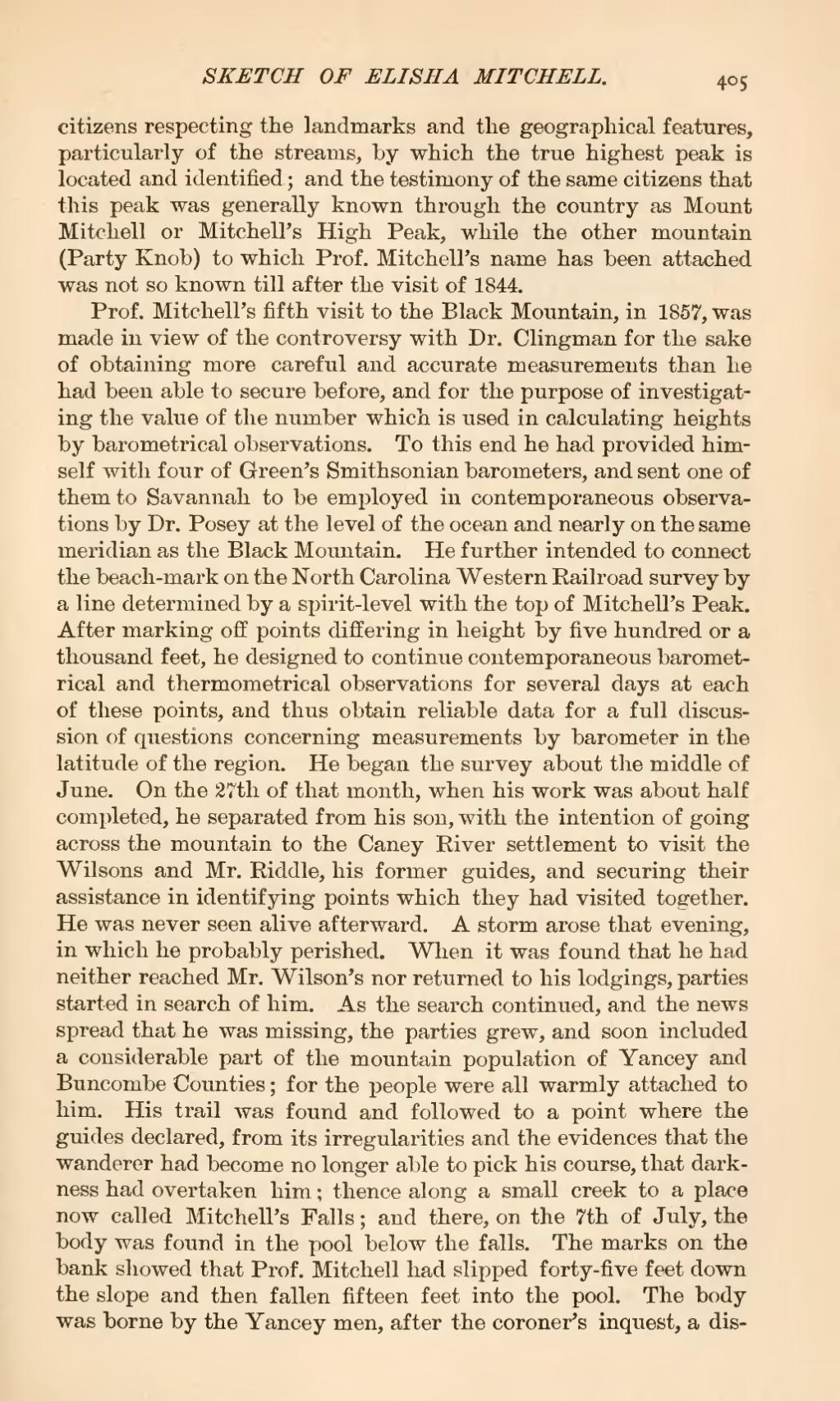citizens respecting the landmarks and the geographical features, particularly of the streams, by which the true highest peak is located and identified.; and the testimony of the same citizens that this peak was generally known through the country as Mount Mitchell or Mitchell's High Peak, while the other mountain (Party Knob) to which Prof. Mitchell's name has been attached was not so known till after the visit of 1844.
Prof. Mitchell's fifth visit to the Black Mountain, in 1857, was made in view of the controversy with Dr. Clingman for the sake of obtaining more careful and accurate measurements than he had been able to secure before, and for the purpose of investigating the value of the number which is used in calculating heights by barometrical observations. To this end he had provided himself with four of Green's Smithsonian barometers, and sent one of them to Savannah to be employed in contemporaneous observations by Dr. Posey at the level of the ocean and nearly on the same meridian as the Black Mountain. He further intended to connect the beach-mark on the North Carolina Western Railroad survey by a line determined by a spirit-level with the top of Mitchell's Peak. After marking off points differing in height by five hundred or a thousand feet, he designed to continue contemporaneous barometrical and thermometrical observations for several days at each of these points, and thus obtain reliable data for a full discussion of questions concerning measurements by barometer in the latitude of the region. He began the survey about the middle of June. On the 27th of that month, when his work was about half completed, he separated from his son, with the intention of going across the mountain to the Caney River settlement to visit the Wilsons and Mr. Riddle, his former guides, and securing their assistance in identifying points which they had visited together. He was never seen alive afterward. A storm arose that evening, in which he probably perished. When it was found that he had neither reached Mr. Wilson's nor returned to his lodgings, parties started in search of him. As the search continued, and the news spread that he was missing, the parties grew, and soon included a considerable part of the mountain population of Yancey and Buncombe Counties; for the people were all warmly attached to him. His trail was found and followed to a point where the guides declared, from its irregularities and the evidences that the wanderer had become no longer able to pick his course, that darkness had overtaken him; thence along a small creek to a place now called Mitchell's Falls; and there, on the 7th of July, the body was found in the pool below the falls. The marks on the bank showed that Prof. Mitchell had slipped forty-five feet down the slope and then fallen fifteen feet into the pool. The body was borne by the Yancey men, after the coroner's inquest, a dis-
